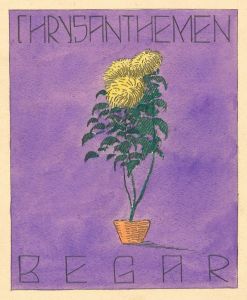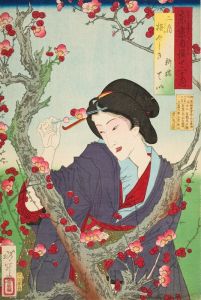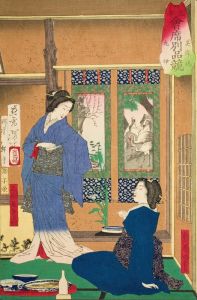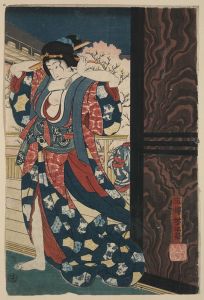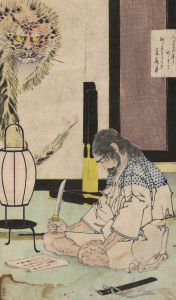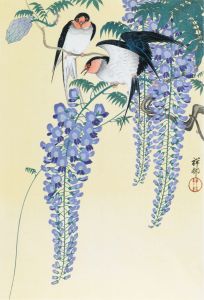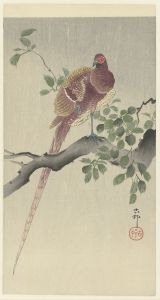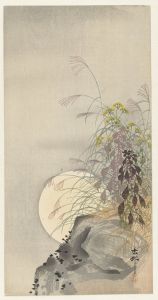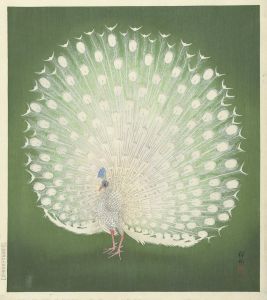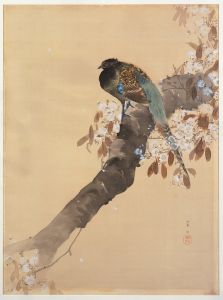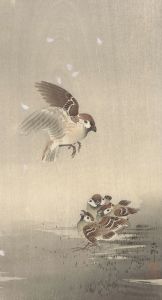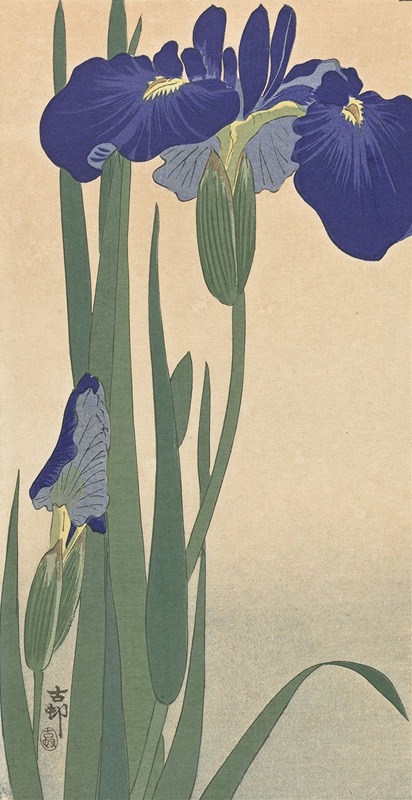
Blue Irises
A hand-painted replica of Ohara Koson’s masterpiece Blue Irises, meticulously crafted by professional artists to capture the true essence of the original. Each piece is created with museum-quality canvas and rare mineral pigments, carefully painted by experienced artists with delicate brushstrokes and rich, layered colors to perfectly recreate the texture of the original artwork. Unlike machine-printed reproductions, this hand-painted version brings the painting to life, infused with the artist’s emotions and skill in every stroke. Whether for personal collection or home decoration, it instantly elevates the artistic atmosphere of any space.
Ohara Koson (1877–1945) was a Japanese painter and print designer of the late 19th and early 20th centuries, known for his exquisite kachō-e (bird-and-flower) prints. His work is often associated with the shin-hanga (new prints) movement, which sought to revitalize traditional ukiyo-e art with modern sensibilities and techniques. One of his notable works is "Blue Irises," which exemplifies his mastery in depicting natural subjects with elegance and precision.
"Blue Irises" is a woodblock print that showcases Koson's skillful use of color and composition. The print features a cluster of irises, rendered in varying shades of blue, set against a subtle, almost monochromatic background. The delicate lines and gradients used to depict the petals and leaves highlight Koson's attention to detail and his ability to capture the ephemeral beauty of nature. The irises are arranged in a way that creates a sense of movement and depth, drawing the viewer's eye across the print.
Koson's work often reflects the influence of both traditional Japanese art and Western techniques. The shin-hanga movement, which he was a part of, aimed to blend these influences to create prints that appealed to both Japanese and Western audiences. "Blue Irises" is a prime example of this synthesis, combining the traditional Japanese subject matter of irises with a composition and color palette that would have been appealing to Western collectors of the time.
The print is also notable for its use of negative space, a common feature in Japanese art that allows the viewer to focus on the main subject without distraction. The background of "Blue Irises" is kept simple, with subtle gradations of color that enhance the vibrancy of the flowers. This technique not only highlights the beauty of the irises but also creates a sense of tranquility and harmony, which are key elements in Japanese aesthetics.
Ohara Koson's prints were widely collected and appreciated during his lifetime, and they continue to be highly regarded by art enthusiasts and collectors today. His ability to capture the essence of his subjects with such precision and beauty has ensured his place in the history of Japanese art. "Blue Irises" remains a testament to his skill and artistic vision, embodying the delicate balance between tradition and innovation that characterizes the shin-hanga movement.
Koson's work, including "Blue Irises," is often featured in exhibitions and collections around the world, allowing new generations to appreciate the timeless beauty of his prints. His legacy is preserved through these works, which continue to inspire and captivate viewers with their exquisite detail and serene compositions.





